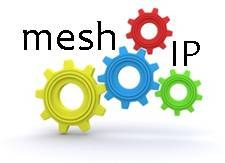 IP telephony encompasses a set of technologies enabling voice, data and video over existing IP-based LANS, WANs and the internet. Using voice over IP (VoIP) as the enabling technology to transport phone calls allows firms to eliminate legacy circuit-switched (TDM) systems and lower equipment costs by converging applications onto a single infrastructure, while browser-based interfaces can simplify system management. Software upgrades are also much easier to implement, as are adds, moves and changes (AMCs).
IP telephony encompasses a set of technologies enabling voice, data and video over existing IP-based LANS, WANs and the internet. Using voice over IP (VoIP) as the enabling technology to transport phone calls allows firms to eliminate legacy circuit-switched (TDM) systems and lower equipment costs by converging applications onto a single infrastructure, while browser-based interfaces can simplify system management. Software upgrades are also much easier to implement, as are adds, moves and changes (AMCs).
At the same time, convergence allows the introduction of a wide-range of value-added applications via unified communications (UC). As such, many IP telephony and VoIP projects now form part of broader UC strategies, which might encompass any combination of instant messaging, presence, conferencing (Web, audio, video), unified messaging, social networking and other applications. Although the UC market remains nascent, the technology promises to increase productivity and teamwork, as well as customer responsiveness by integrating IP telephony with instant messaging and presence, or by extending call history and directories to mobile devices, for example.
Despite these benefits, independent research firm Nemartes found that in 2010, only 17% of companies had fully deployed VoIP technology. The bulk of those were small and mid-sized businesses as larger firms continue to scrutinize the business case and deploy the technology in a tactical manner – e.g. to replace TDM systems that have reached end-of-life, equip new ‘greenfield’ locations, or to meet the needs of specific job functions or applications. It also found that many firms fail to budget for voice quality management and monitoring tools, and often have to spend more on the LAN upgrade than they originally budgeted for. This is either because they didn’t evaluate the LAN at all or because they didn’t run the appropriate baseline network assessments to determine the actual upgrades required.
Preparing for VoIP
Making the transition from traditional voice communications equipment, or POTS (plain old telephony service), to a converged infrastructure supporting IP telephony is a complex task. Legacy communications infrastructure is focused on transporting data from one point to another successfully and, to a certain degree, in light of response times – i.e. how quickly the user receives the information they need. With IP telephony however, the question is whether the network is capable of handling VoIP traffic and delivering the quality of experience the end user demands.
It is therefore common practice to rollout VoIP to a small subset of the organization first in order to understand whether the required call quality can be delivered. To provide a numerical indication of the perceived quality of the media (e.g. voice or video) during live testing, IT operations teams use Mean Opinion Score (MOS) and R-value score calculations. Historically, both have been quite subjective as they are based on the quality as perceived by the end user. As such, IP SLA and Proxy Ping are two logical tests that are used to measure response time from an end user perspective. As the MOS ratings for codecs and other transmission impairments are now more well known, estimated MOS values can be computed and displayed based on measured impairments (delay and packet loss).
The estimated MOS value is designated as ‘MOS-CQE’ (Mean Opinion Score; Conversational Quality, Estimated) by the ITU. IP SLA tests use this computation to provide MOS and R-Value metrics. In addition to call quality metrics, response time tests help show the readiness of the network to support an application with little tolerance for latency and jitter, while 90th and 95th percentile reports can also be run to ensure that a VoIP rollout goes smoothly.
It is also important to assess whether the network is sized properly in respect of accommodating rising volumes of voice traffic and how it might impact traffic relating to other business applications. This is achieved either by adding more IP phones or employing call generators (aka ‘probes’) to increase call loads and then monitoring the network for changes in performance. It is likely that quality of service (QoS) parameters will need to be adjusted – e.g. by increasing QoS queues – to ensure that all the different types of applications running over the network have the appropriate amounts of bandwidth associated with them, while more bandwidth may be required for specific sections of the network.
Establishing baselines
Reporting and having the visibility to test, monitor and validate current infrastructure performance as VoIP is rolled out is essential to long-term success. Reporting on performance, utilization and capacity enables IT operations teams to baseline their current network performance with IPSLA testing employed to assess the impact of VoIP. Having established a baseline of ‘normal’ performance levels, it is then possible to dynamically set accurate thresholds and implement alerts that are issued the moment (or even before) performance degrades or deviates from normal.
Scheduled and on-demand reporting delivers the key performance indicators (KPIs) that, when combined with call quality metrics, provide visibility of the impact of VoIP on both business-application and network performance. For IP telephony, the critical measurements relating to network performance are:
· Packet loss – the discarding of data packets in a network when a device is overloaded and cannot accept any incoming data at a given moment
· Latency – a measure of time delay experienced in a system
· Jitter –a measure of the variability over time of the packet latency
Any increase in latency, jitter, or packet loss will be noticed almost immediately by the caller in the form of static, echo or intermittent sound. In the worst case, the call will drop out altogether. In addition, CDR (call data record) and RTCP (Real-time Transport Control Protocol) based reports can deliver rich statistics for each completed call leg, again enabling call quality measurements to be compared against baselines, and threshold-based alerts issued accordingly.
Maintaining full visibility
Once a full-scale VoIP rollout is live, IT operations teams will continue to need full visibility into both the performance of the IP telephony infrastructure, and that of the network and the other business applications being supported. This means collecting data including network KPIs such as QoS queue utilization, key statistics for the call manager server, implementing IP SLA tests to measure end to end latency, and gather call data via RTCP to understand actual call MOS, Jitter and latency.
Having the ability to link and graph IP telephony call quality metrics with key network performance indicators and then reporting on key call manager statistics for example, means it is possible to see CPU performance, memory usage, interface performance, call per second, number of registered phones, call manager heart beat, as well as the current call for today with MOS scoring, jitter and latency.
With all of this data in one place, normalized and consistent, IT operations teams can easily recognize when call manager performance suffers and assess the impact on call quality and success. When a sudden spike in data traffic impacts on call quality, full visibility ensures that the IT operations team is able to instantly identify the application consuming bandwidth and resolve the issue accordingly. For example, by determining that a user is streaming a non-business related video and hogging bandwidth, the IT manager can quickly contact the user and ask them to discontinue or block access.
Why an appliance makes sense
In a converged network environment supporting IP telephony and UC applications, IT operations teams must collate an ever-increasing volume of performance data – such as server metrics, application flows, network metrics and voice and video quality metrics – from a burgeoning number of network elements if they are to gain an understanding of how key services are performing.
Given the limited scalability of legacy performance management tools, an appliance-based solution is recommended because it eliminates the need for additional software, hardware, or external databases, and can be used in standalone or peered configurations in order to quickly provide reports on any indicator, device, or application to be monitored. Furthermore, the proprietary or technology-specific performance management tools available today are unable to deliver the required level of visibility because data must be acquired manually and cannot be overlaid to gain a single view.
The ability to analyze both network and VoIP performance from one system enables faster troubleshooting and problem resolution, and better coordination between network operations teams and telephony teams. Crucially, the ability to troubleshoot issues effectively before they impact on service or network performance means quality of experience and network availability can be assured for all services.
Author: Peter Cruz
Source
- The Customer Edge Drives the Need for NaaS - June 25, 2023
- Blockchain Evolves And Secures - January 13, 2019
- Bessemer Ventures’ 2018 Cloud Computing Trends - February 25, 2018




